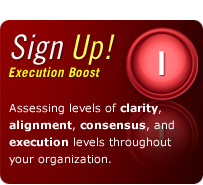Interpersonal Expertise Tip: Creating Clear, Strong and Flexible (CSF) Boundaries
February 7th, 2010
We all have personal preferences and values. If we don’t know how to respect our own preferences and values (and those of others – even those we disagree with), we can set ourselves up to experience a great deal of unnecessary conflict. Therefore, it seems imperative to know how to consistently set clear, strong and flexible (CSF) boundaries. CSF boundaries are created by individuals with the ability to identify and establish the kinds of relationship patterns that help everyone feel connected and understood; such abilities contribute greatly to Interpersonal Expertise.
Clear, strong and flexible (CSF) boundaries can be created by understanding the basics of boundary-building. Here are some ways people have been able to create CSF boundaries:
- Identification of rules and boundaries. “Rules” are the repeated patterns that determine how people interact. “Boundaries” are the collection of these rules that serve to separate and connect us. Rules and boundaries are in play even if we are unaware of them; the more aware we become of the boundaries that we prefer, the more influence we have over ourselves and our social interactions. For example, some of us are very comfortable with being the butt of a joke in public, others feel as though this is disrespectful of them. The more of our rules we are aware of, the more power we have to seek out people who will respect our boundaries.
- Taking control of flexibility and interrelatedness. Some rules and boundaries are flexible and some are more rigid. For example, some of us are comfortable being the butt of a joke in certain public arenas, but not in all of them. This is an example of a flexible “public joking” rule. Others are more rigid with this rule; it may be that being the butt of a joke is not appreciated no matter who is doing the joking and where it is happening. In general, a collection of overly rigid rules tends to create a tone of disconnection with others, while overly flexible rules can sometimes create a tone of enmeshment or dependency (or an inability to establish our own values or preferences). By striking a balance between rule rigidity and flexibility, we can create a feeling of connection and independence (sometimes referred to as interdependence) within our important relationships.
- Seeking out environments where boundaries are respected. As many people know, certain environments and groups of people are not very respectful of others’ values and/or preferences. The creation of clear, strong and flexible boundaries can be enhanced by placing ourselves in environments that respect our rules and boundaries. After we become aware of our boundaries and how flexible or rigid we want them to be, we can then seek to spend more time with people who respect these preferences and minimize time spent with those who do not. For example, if we have a rigid rule about not wanting to be joked about in public, it can be helpful to seek out people who work to avoid doing this (and minimize time with those who do not respect this preference).
NOTE TO THOSE USING THE MISSION FULFILLMENT SYSTEM: You can move toward more Interpersonal Expertise by adding a new Objective to your system by using the “Add New Item” link (for example, “Create clear, strong and flexible boundaries”). You can then develop a SMART Goal related to that new Objective by using the “Add Subitem” link to the far right of the new Objective (for example, “Spend 15 minutes a week identifying my rigid rules and my flexible rules.”).
FOR THOSE WHO ARE NOT ON THE MISSION FULFILLMENT SYSTEM: Click here to for more information and click here to sign up.
FINAL NOTE: If you were linked to this article by a video or email, please return to that link and proceed with any other instructions that you deem helpful. For more Execution Excellence and Interpersonal Expertise tips and tools visit our site at: www.excellenceuniversity.net
Article Filed under: 2. Interpersonal Expertise Tips



2 Comments Add your own
1. Lindsey E | October 10th, 2014 at 11:15 am
This is a topic I am still learning to identify and enforce appropriately, but it has definitely helped me understand myself and others help understand me when they are laid out. For example, while I do not mind hugs or being close to someone physically (as in in my personal space), there is definitely a boundary there for me. A hug when I first see someone and perhaps when someone leaves is acceptable, but if someone keeps hugging me, I get stressed out and uncomfortable. Thus, I like to make sure my friends know that too much physical intimacy, such as hugs or sitting close to me, makes me uncomfortable and I dislike it. That is a rigid boundary for me, for I will start to move away physically from a person if they continue this sort of behavior. This boundary becomes a little more flexible in a relationship, though. For example, I do not mind hugs as much, or holding hands, however, if it is PDA overboard, it stresses me out too and I dislike it. Thus, I have to make sure I tell my partner up front about this boundary, and be sure to point it out if they accidentally cross it. There have been people I have met that seem to depend on this kind of attention, and unfortunately, end up creating an environment that does not respect my boundary. In that case, I end up distancing myself from that environment and instead moving into environments that support it more. I think it is really important to remember that you do not have to stay in the environment you are in now, and if an environment does not support your boundaries, your boundaries are not wrong. I have seen cases where people feel stuck and feel as if they need to change because their boundaries are not respected. This could not be further from the case. One thing I have learned recently is that not everyone is going to be best friends, friends, or even acquaintances. It doesn’t mean that you are wrong or doing something wrong, it just means you may not click, have similar ideas or interests, core values, views, etc. There are a million reasons why this could be true. But being in an environment with someone you may not click with, yet feel compelled to stay with (perhaps people pleaser mentality) may make one feel as though one’s boundaries are wrong and one must change. This could not be further from the truth. Each person will have their own individual boundaries, and they should be respected! If one’s boundaries are not respected, even after repeatedly explained and pointed out, then that should be a red flag that this is an unsupportive environment (here is an article about supportive environments: http://www.excellenceuniversity.net/journal/683/interpersonal-expertise-tip-create-and-maintain-a-supportive-environment ). No one should have their boundaries crossed – there is no reason to deal with unnecessary stress. And that is the point of creating CSF boundaries – clear, strong, flexible boundaries that are laid out in such a way they are easy to steer clear off and avoid causing accidental stress/harm/upset.
2. Crystal Agosto | March 19th, 2015 at 12:14 pm
This article talks about the importance of creating clear, strong and flexible boundaries. This is important because if we learn how to respect our own preferences and the preferences of others, we can experience much less conflict. It is important to set rules and boundaries, to be somewhat flexible, and to seek out environments where boundaries are respected. This will help you to feel more comfortable when relating to others and will help you to be neither disconnected nor enmeshed/dependent. This relates to the S (social support) in STEAM because it relates to the way you interact with others. For me, it is helpful because in the past I tended to be a pushover and let other people bulldoze my boundaries. Setting clear rules and sticking to them helps me to find which people are positive influences and which aren’t.
Trackback this post | Subscribe to comments RSS Feed
Leave a Comment
Some HTML allowed:
<a href="" title=""> <abbr title=""> <acronym title=""> <b> <blockquote cite=""> <cite> <code> <del datetime=""> <em> <i> <q cite=""> <s> <strike> <strong>